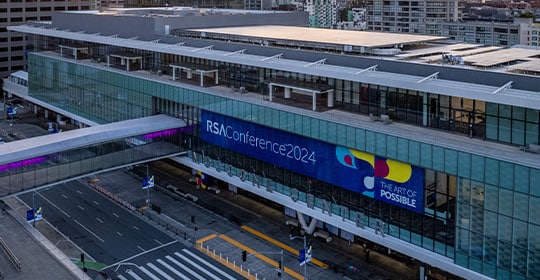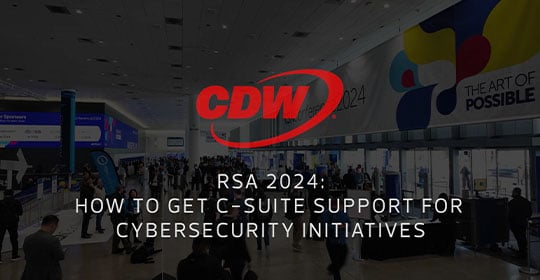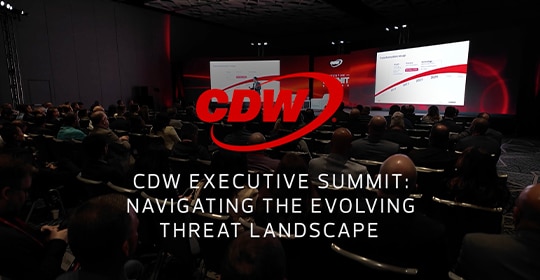Research everything IT
Showing results for: "threat and vulnerability management"
1 - 24 of 24
Sort By:
Jul 04, 2025
Security
Stay One Step Ahead: 3 Cutting-Edge Solutions to Enhance School Bus Safety
Article
6 min
Learn how AI, GPS and tech integrations improve school bus safety. Explore proactive solutions to enhance fleet management, safety and student security.
Mar 14, 2025
Security
Protecting OT and Critical Infrastructure in an Evolving Threat Landscape
White Paper
12 min
A trusted partner can help boost security and resilience for critical infrastructure and organizations that rely heavily on operational technology.
Jan 17, 2025
Security
Key Considerations for Small Businesses and CMMC 2.0
Article
4 min
Businesses face several challenges with the new Cybersecurity Maturity Model Certification 2.0 program, which outlines security requirements that all contractors handling sensitive information with the Department of Defense must follow.
Dec 19, 2024
Security
The Key Step Beyond Authentication in Identity and Access Management
Article
3 min
Identity Governance and Administration helps businesses control what resources authenticated users can access.
Dec 17, 2024
Security
How One Company Modernized IAM with an Automated Solution
Case Study
7 min
CDW’s Identity and Access Management Delivery team helped the company leverage a scalable platform to support its growing footprint.
Dec 04, 2024
Security
Zero-Trust Security Strategies for Operational Technology Environments
Article
5 min
As operational technology (OT) environments undergo digital transformations, many organizations face a new threat landscape. When securing OT assets from evolving threats, zero-trust security strategies can be a key piece of the puzzle.
Sep 18, 2024
Security
How Purple Team Exercises Can Enhance Your Threat Management Strategy
Article
5 min
Purple team exercises test your threat management posture by simulating attacks on your systems, processes and technologies. Here’s how this tactic can help fine-tune your defenses against evolving threats through collaboration and shared learning.
Aug 23, 2024
Security
How Proper Asset Management Can Prevent Cyberattacks
Article
3 min
CISOs are learning the hard way that IT teams don’t have all the answers when it comes to what’s in their environment.
Aug 09, 2024
Security
5 Critical Components of a Nonprofit Cybersecurity Strategy
Article
2 min
Safeguard your critical data with security best practices for nonprofit organizations.
Jun 24, 2024
Security
RSA 2024: What Businesses Need to Know About Cyber Insurance
Article
4 min
You shouldn’t do without this vital protection. but each policy is unique, so it's important to understand the basics.
May 28, 2024
Security
RSA 2024: How to Get C-Suite Support for Cybersecurity Initiatives
Video
4 min
Drumming up executive-level support for cybersecurity can be challenging unless you speak the right language.
Apr 17, 2024
Security
CDW Executive SummIT: Navigating the Evolving Threat Landscape
Video
4 min
Threat actors are constantly changing their tactics to include innovative new technology. Cybersecurity teams must do the same to keep their organizations secure and resilient.
Apr 12, 2024
Security
4 Best Practices for Creating Effective Vulnerability Management Programs
Article
5 min
Vulnerability management is a key part of an organization’s cyber resilience strategy — but it includes more than scanning tools. Better protect your data, assets and stakeholders by creating a comprehensive program that extends beyond technology.
Nov 17, 2023
Security
5 Things Company Leaders Need to Know if They’re Breached
Article
3 min
The best time to make decisions about cyber incident response is before an attack ever takes place.
Oct 18, 2023
Security
Securing SCADA Networks in the Digital Age
Article
4 min
As organizations connect their operational technology to their IT networks, they must take proactive steps to stay safe in a constantly evolving threat landscape.
Oct 06, 2023
Cloud
7 Non-Negotiables for Cloud Threat Management
Article
5 min
Understand the top mistakes organizations are making when it comes to managing threat in the cloud.
Oct 03, 2023
Security
4 Benefits of Consolidating with Secure Access Service Edge
Article
3 min
Moving to a SASE platform can reduce security management burdens, minimize vulnerabilities, cut costs and improve the user experience.
Sep 29, 2023
Security
Protecting Against Threats to GenAI Models: What CISOs Need to Know
Article
5 min
In product development, Generative AI models (GenAI) bring transformative capabilities in content generation, creative design tools and more — but with it, there are potential security risks that IT leaders, especially CISOs, must be aware of.
Sep 22, 2023
Security
5 Key Takeaways From CISA's Zero Trust Guidance 2.0
Article
6 min
The Cybersecurity and Infrastructure Security Agency (CISA) recently updated their guidance on zero-trust maturity in April of this year, shedding new light on the importance of zero trust in today’s expanding threat landscape. Here’s what to know.
Apr 27, 2023
Security
Balancing Access and Security in Financial Services
Use Case
3 min
Ensuring only the right people get in is more important than ever. Threat and vulnerability management solutions can help.
Oct 07, 2022
Security
8 Precautions to Prevent Insider Cyberattacks in K-12 Districts
Article
8 min
Whether the threat comes from within the schoolhouse or outside of it, these are the safeguards K-12 institutions need to implement.
Oct 03, 2022
Security
Don't Get Hooked: Avoid Becoming the Bait of a Phishing Email
Article
3 min
The cybersecurity landscape is rapidly changing and being fooled by just one phishing email can compromise your entire organization. Take a look at the infographic below to learn what to look out for in a suspicious email.
Feb 02, 2022
Software
How to Address the Log4j Security Issue with DevOps
Article
3 min
The software asset management practices that guard against this threat can also reduce risk and technical debt.
Oct 19, 2021
Security
Embrace the Human Element of Cybersecurity
Article
3 min
A balanced set of social and technical controls can help organizations address a major cybersecurity vulnerability: people.
1 - 24 of 24


























